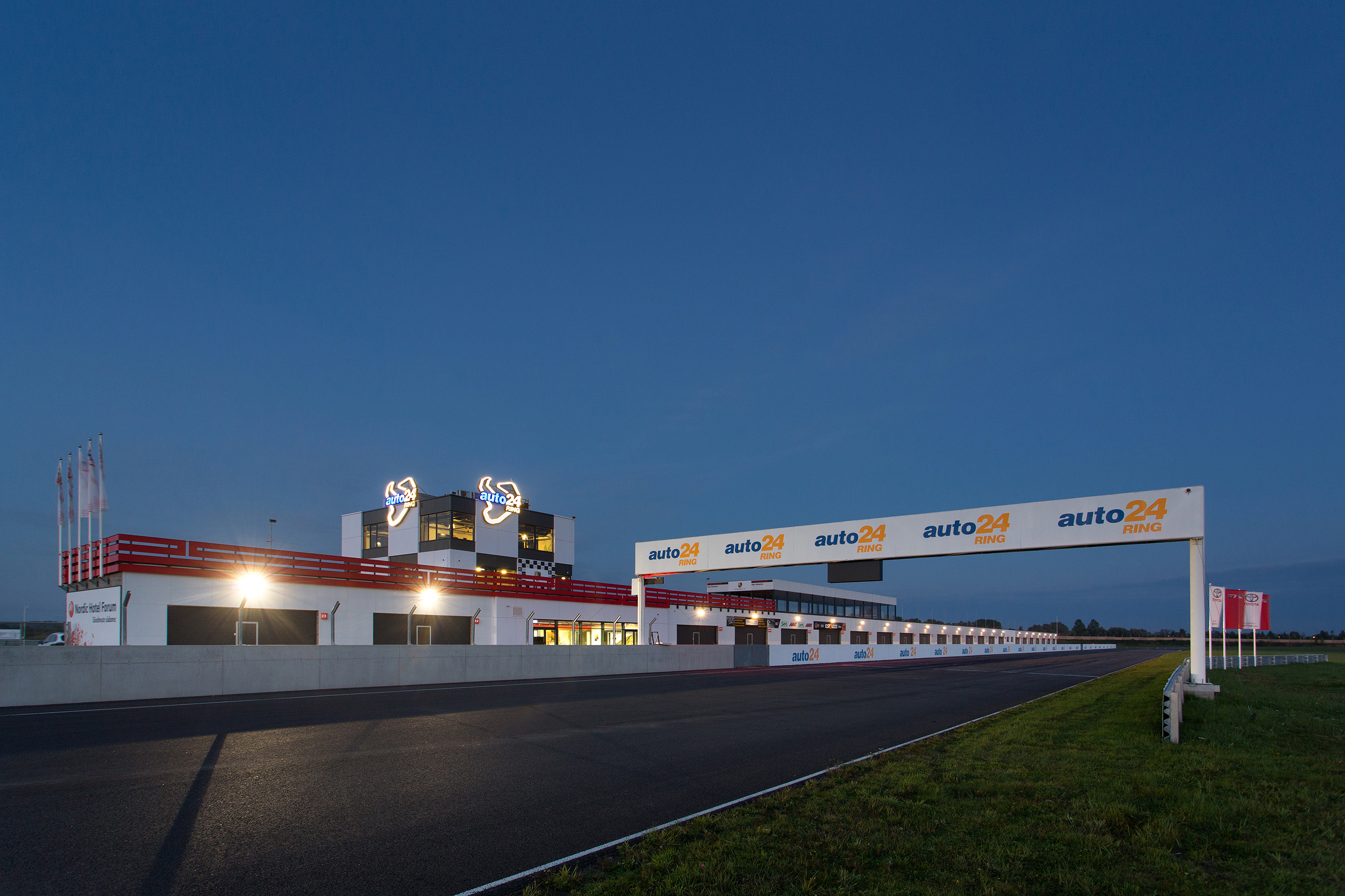
Ringraja hoonestus on spetsiifiline, vajalik on stardihoone avanemine mitmetele erinevatele kasutajagruppidele (aktiivsed võistlejad, kohtunikud-organisaatorid, pealtvaatajad). Stardihoone katkestab garaaziderivi ning on parkla ja ringraja vaheliseks ühenduslüliks esimese korruse tasandil.
Hoone esimese korruse ruumid on võistejate ja vahetult võitlejatega suhtlevate inimeste päralt. Sekretariaat, registreerimine, võitlejate pesu- ja riietusruumid asuvad esimesel korrusel. Teine korrus on kahe saaliga multifunktsionaalne korrus, kus on võimalik viia läbi üritusi (koolitused jms). Teiselt korruselt pääseb katuseterrassile, kust avaneb suurepärane vaade stardisirgele ja ringrajale. Hoone katus on osaliselt pealtvaatajatele avatud, teises ehitusetapis on kavandatud kogu hoone katus teha tribüünideks. Kolmas korrus töötab ringraja administratiivruumidena. Kuna hoone asub siledal krundil ning on ka maanteedelt vaadeldav oli oluliseks ülesandeks hoonele visuaali loomine, mis seoks hoone selgelt ringrajaga, oleks distantsilt nähtav ning haakuks ringrajal toimuva tegevusega.
Loogiliseks lahenduseks oli vähemalt Baltikumi suurima ruudulipu ehitamine. Mootorispordi inensiivsust kannab endas kasutatud punane toon piiretel ning sisekujunduses.
The construction of the circuit is specific, it is necessary to open the start building to several different user groups (active competitors, judges-organizers, spectators). The start building interrupts the garage row and is the connecting link between the car park and the circuit at the ground floor level.
The rooms on the first floor of the building are owned by the competitors and people who communicate directly with the fighters. The secretariat, registration, laundry and changing rooms for the fighters are located on the ground floor. The second floor is a multifunctional floor with two halls, where it is possible to hold events (trainings, etc.). From the second floor you have access to the roof terrace, which offers a great view of the start line and the circuit. The roof of the building is partially open to spectators, in the second stage of construction it is planned to make the entire roof of the building into grandstands. The third floor works as the administrative premises of the circuit. As the building is located on a smooth plot and can also be seen from the roads, an important task was to create a visual appearance of the building that would clearly connect the building to the circuit, be visible from a distance and be connected to the activities on the circuit.
The logical solution was to build at least the largest square flag in the Baltics. The intensity of motorsport is reflected in the red tone used on the borders and in the interior design.
Martin Kinks, Margit Valma, Diana Taalfeld (NU arhitektuur)
Sisearhitektuur / Interior – Martin Kinks, Diana Taalfeld (NU arhitektuur)
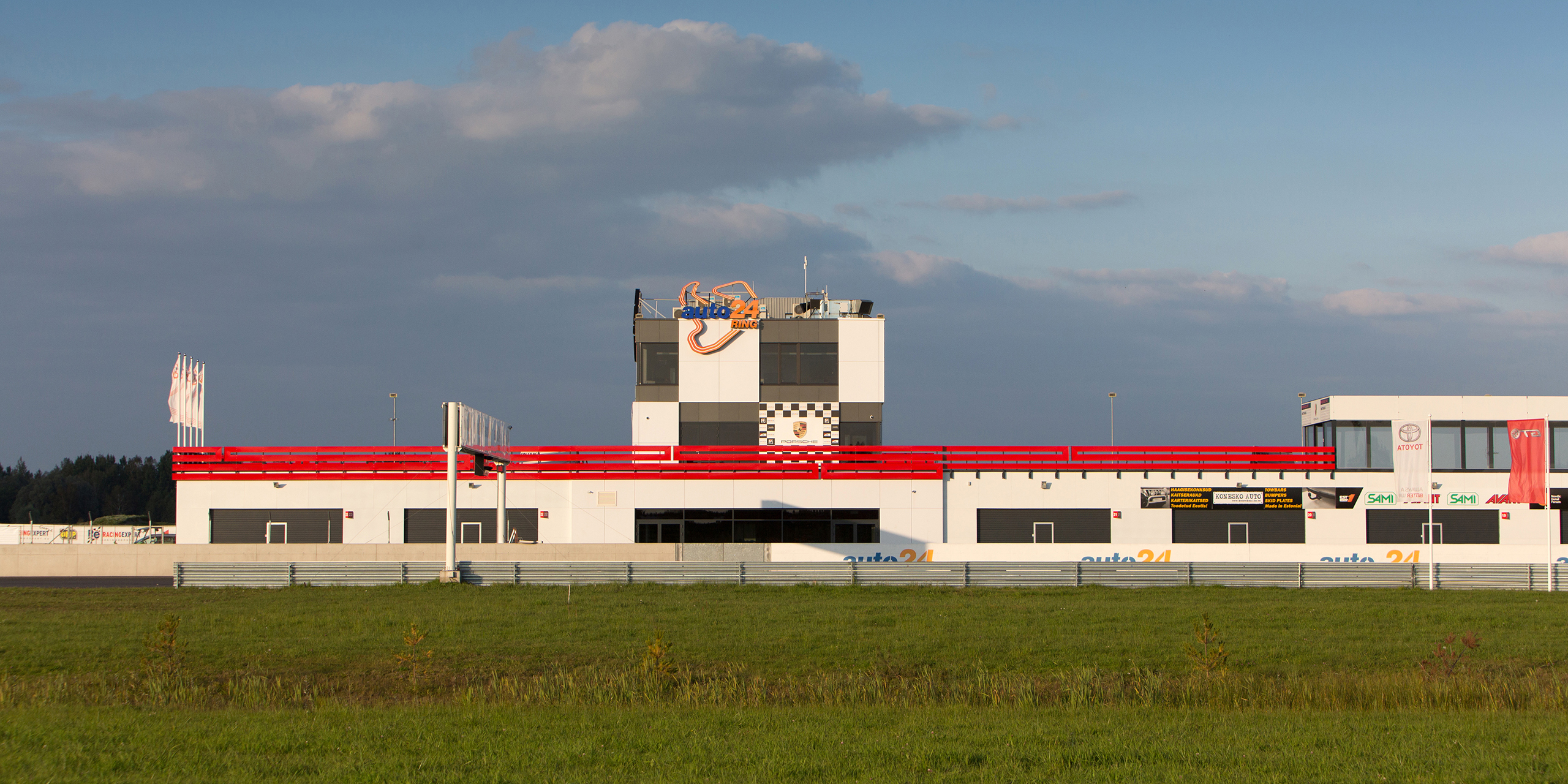
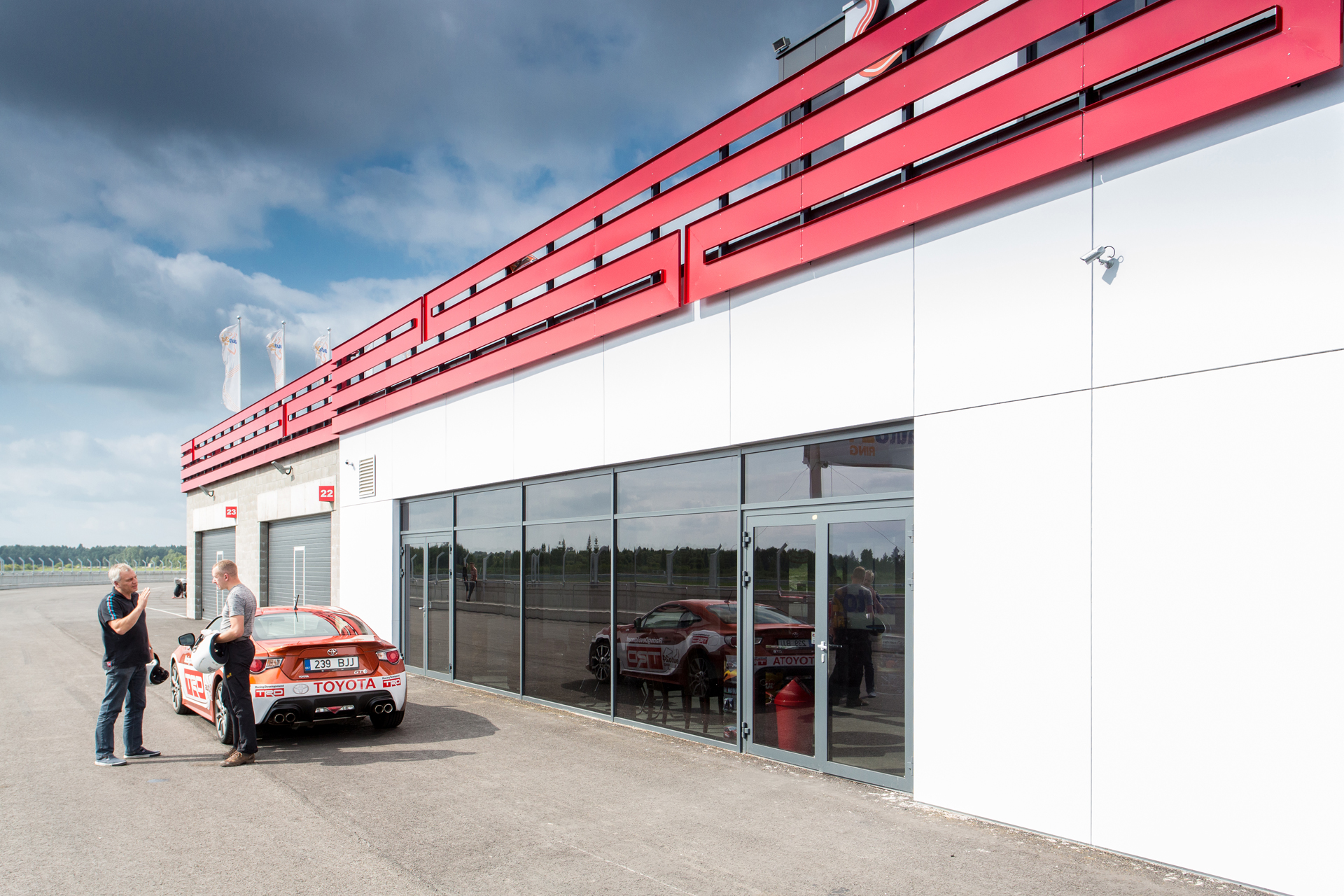
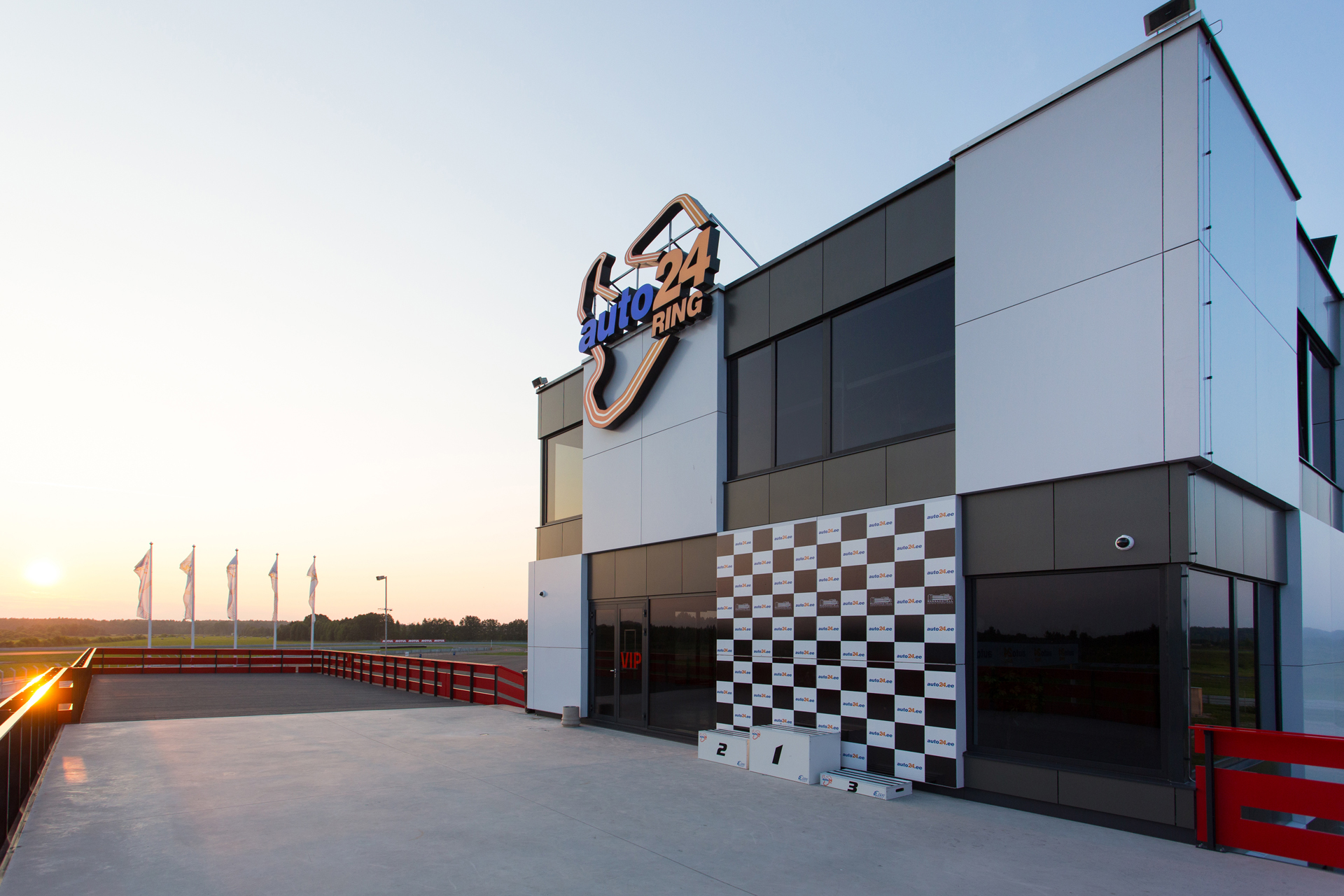
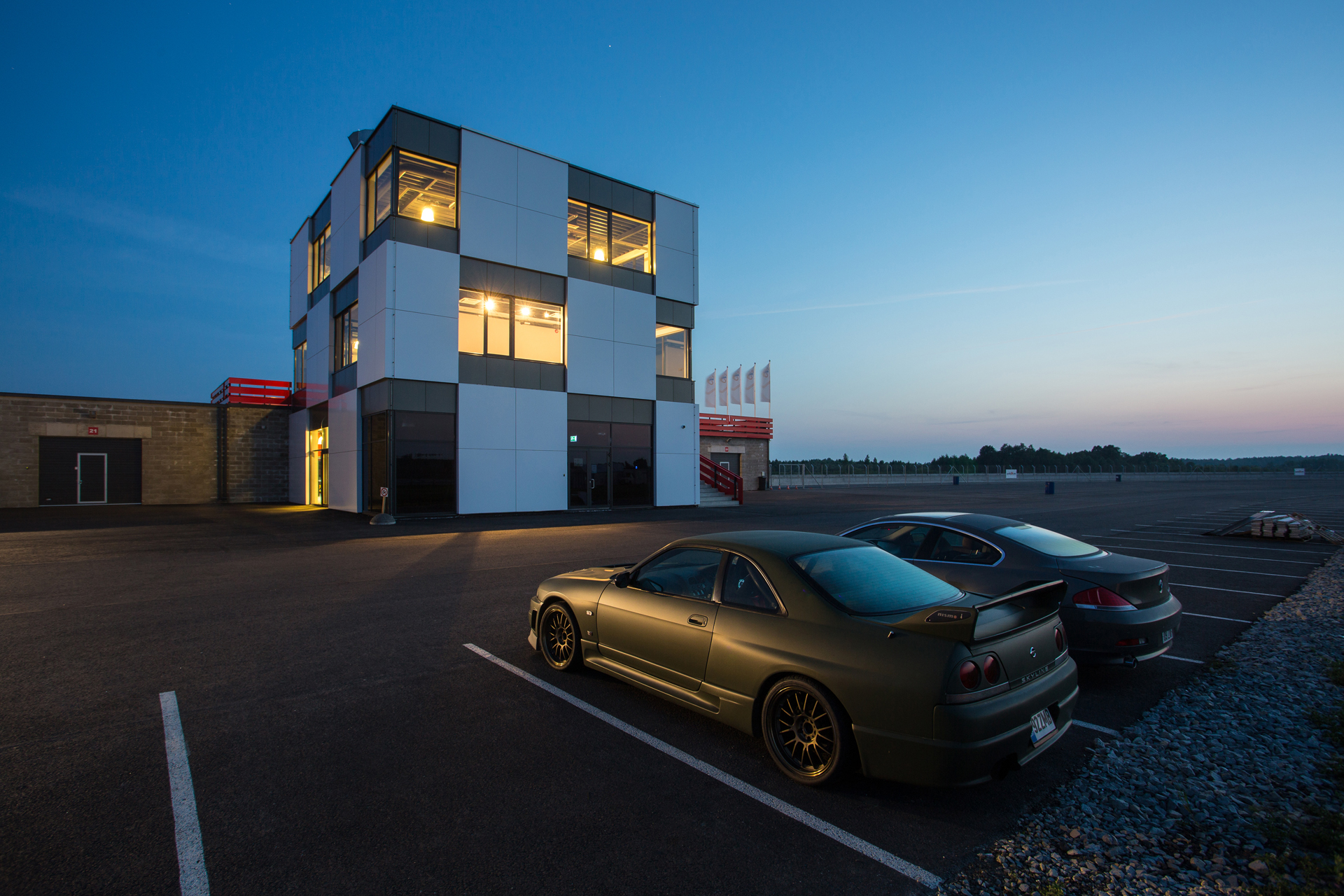


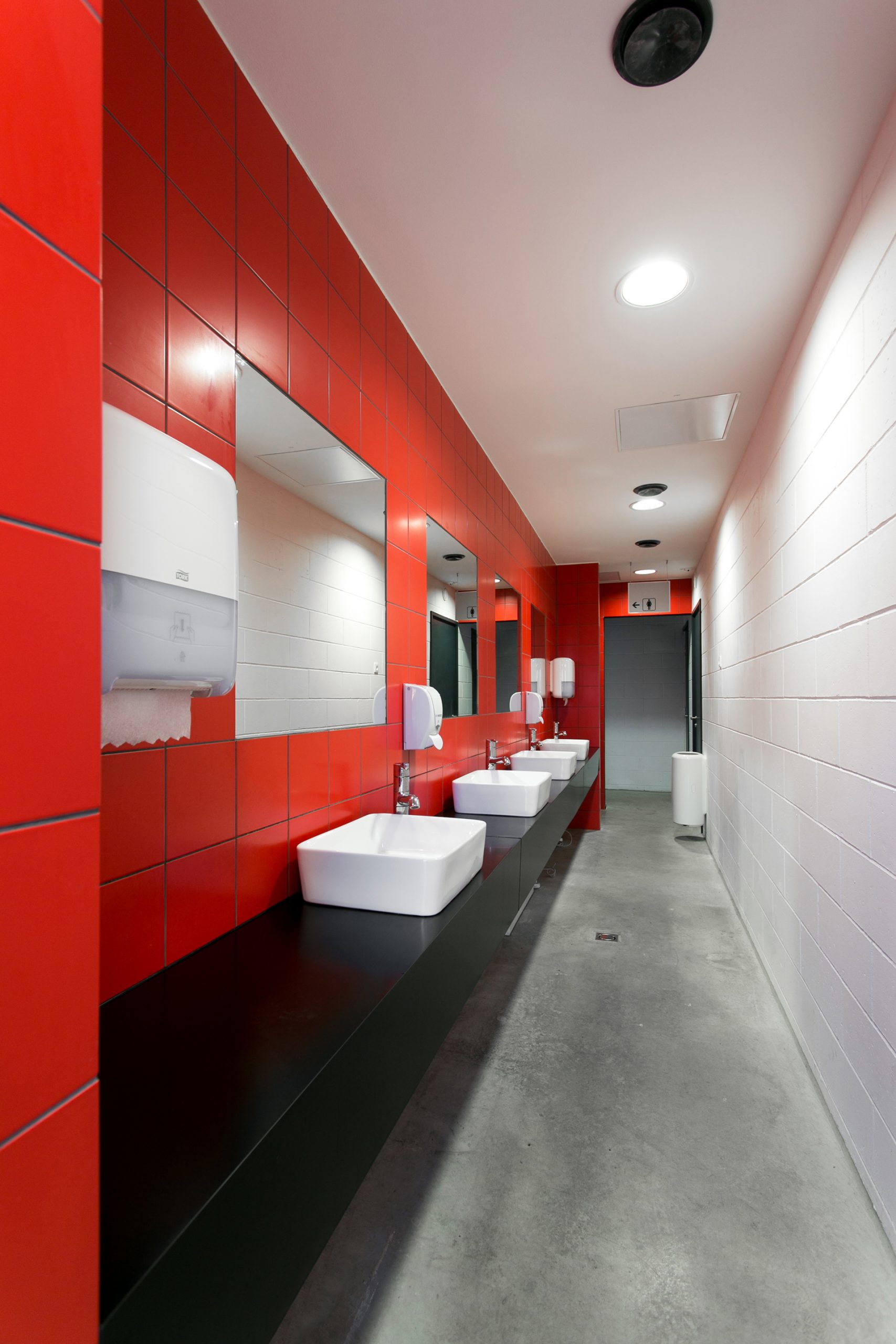
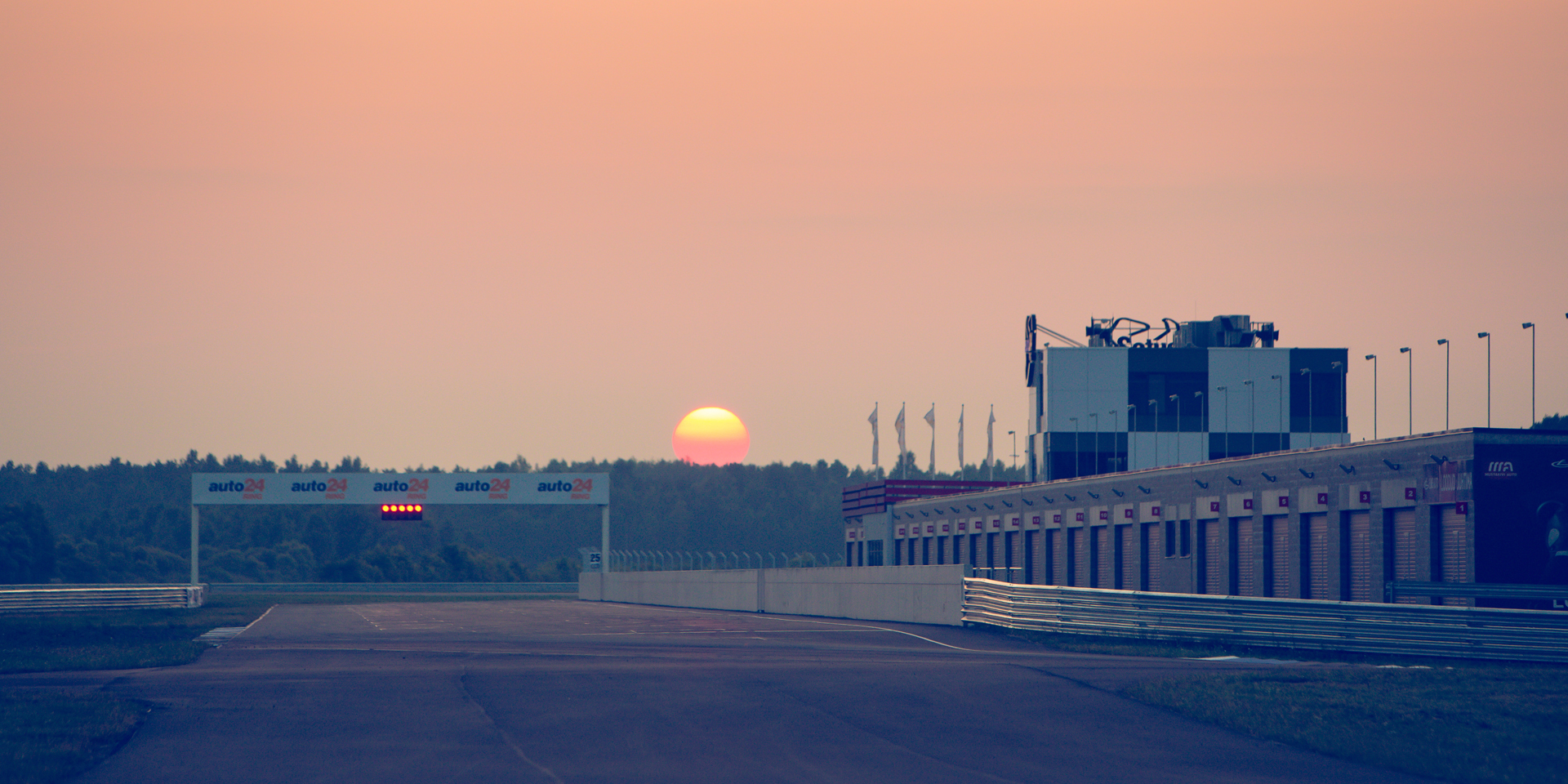
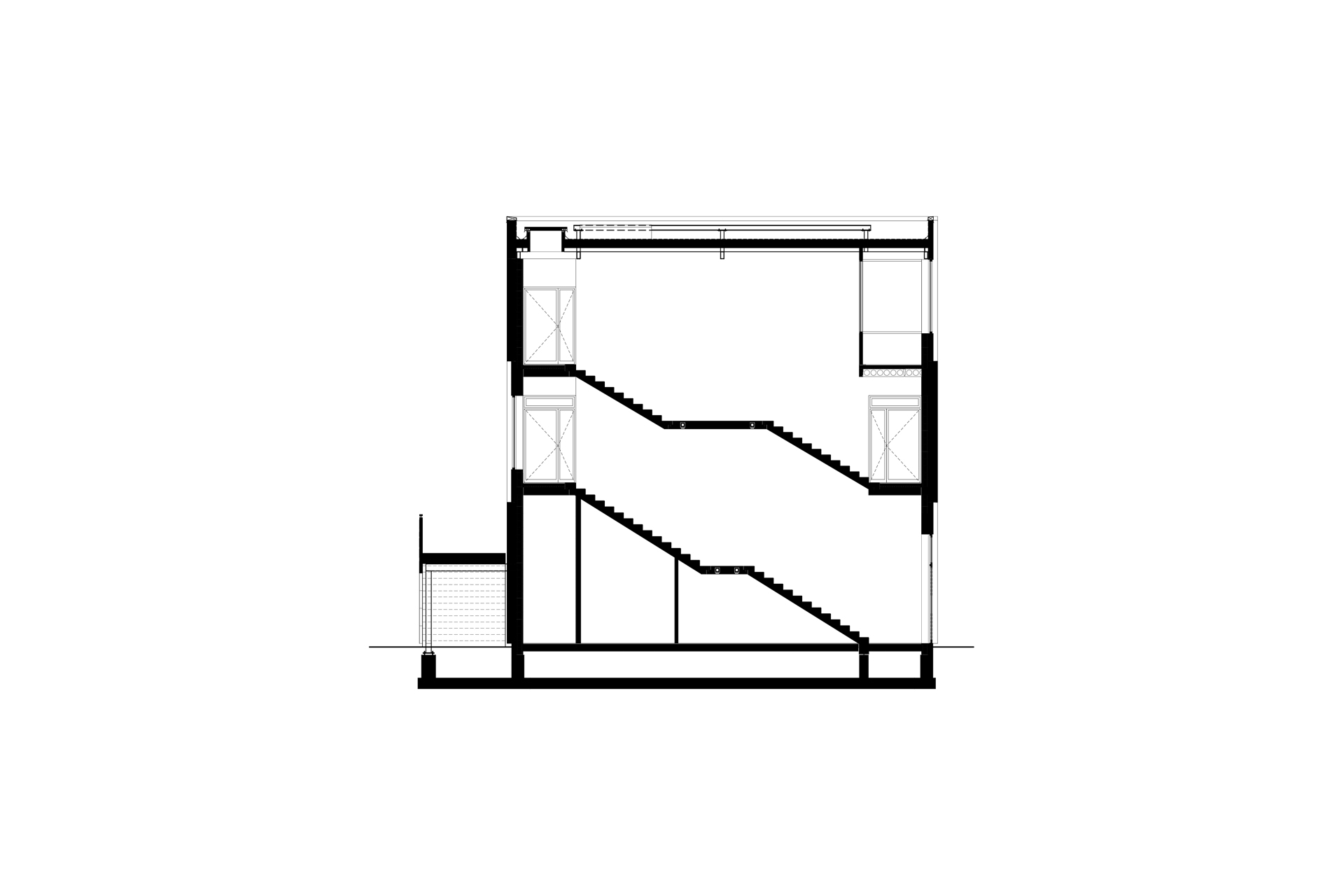 Lõige A / Section A
Lõige A / Section A
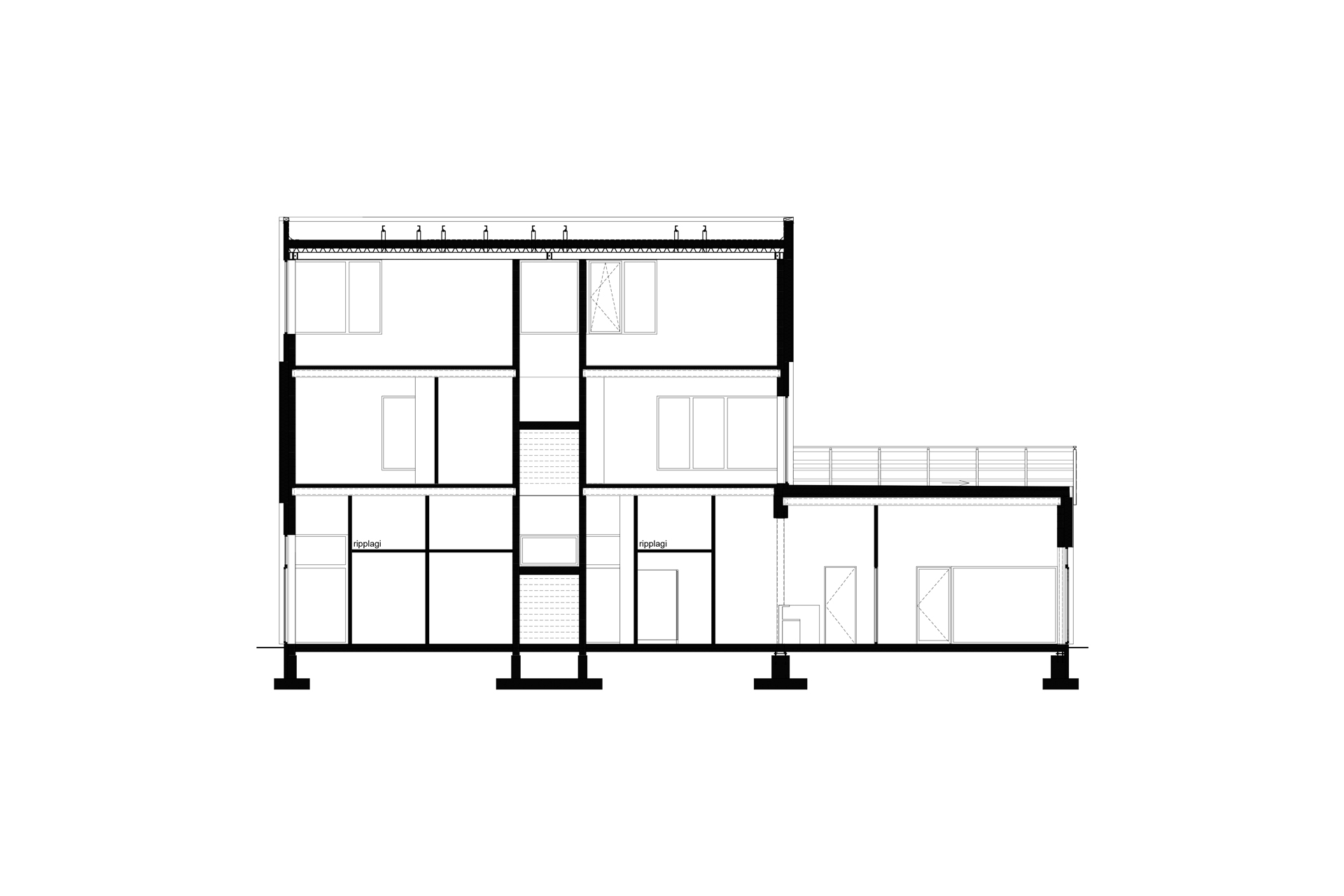 Lõige B / Section B
Lõige B / Section B

